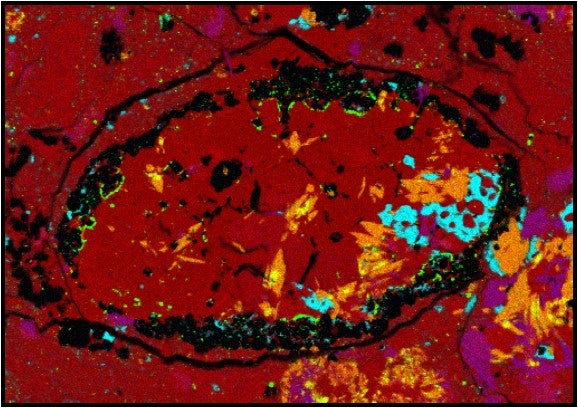Mysterious dwarf planet-sized asteroid is hidden in our solar system, study suggests

Your support helps us to tell the story
From reproductive rights to climate change to Big Tech, The Independent is on the ground when the story is developing. Whether it's investigating the financials of Elon Musk's pro-Trump PAC or producing our latest documentary, 'The A Word', which shines a light on the American women fighting for reproductive rights, we know how important it is to parse out the facts from the messaging.
At such a critical moment in US history, we need reporters on the ground. Your donation allows us to keep sending journalists to speak to both sides of the story.
The Independent is trusted by Americans across the entire political spectrum. And unlike many other quality news outlets, we choose not to lock Americans out of our reporting and analysis with paywalls. We believe quality journalism should be available to everyone, paid for by those who can afford it.
Your support makes all the difference.Our solar system appears to be home to a huge and unknown dwarf planet-sized asteroid, according to a new study.
A small shard of meteorite that arrived on Earth in 2008 appears to have come from the asteroid, according to researchers who have studied the sample.
The parent asteroid appears to be roughly the size of Ceres, the dwarf planet is the biggest object in the asteroid belt, the researchers say. It also appears to have been formed around water and under some pressure, they found.
Meteors and meteorites can provide a key way of understanding more about our solar system, since they come from asteroids that are left over from the formation of our planet and its neighbourhood.
While many are left in the asteroid belt between Mars and Jupiter, others have been broken up and sent pieces into the inner solar system. One of those pieces arrived 12 years ago, and has been used to study the still mysterious, large parent asteroid that appears to be hiding in our solar system.
The shard of the meteorite known as Almahata Sitta, or AhS, was already notable. It arrived on Earth in 2008, when a a 9-ton asteroid came into Earth’s atmosphere, and exploded into some 600 meteorites somewhere over Sudan.
It was the first time that scientists had been able to predict an asteroid impact before it actually happened. That meant they were able to scoop up 23 pounds of samples, which have been the object of scientific study in the time since.
“We were allocated a 50-milligram sample of AhS to study,” said SwRI Staff Scientist Dr. Vicky Hamilton, first author of a paper published in Nature Astronomy, in a statement. “We mounted and polished the tiny shard and used an infrared microscope to examine its composition.
"Spectral analysis identified a range of hydrated minerals, in particular amphibole, which points to intermediate temperatures and pressures and a prolonged period of aqueous alteration on a parent asteroid at least 400, and up to 1,100, miles in diameter.”
Such amphiboles are rare in meteorites like Almahata Sitta, which are known as carbonaceous chondrite and serve as a record off the earliest stages of the universe. As such, it could offer a new source of information about the materials that were present in the early solar system.

Join our commenting forum
Join thought-provoking conversations, follow other Independent readers and see their replies
0Comments